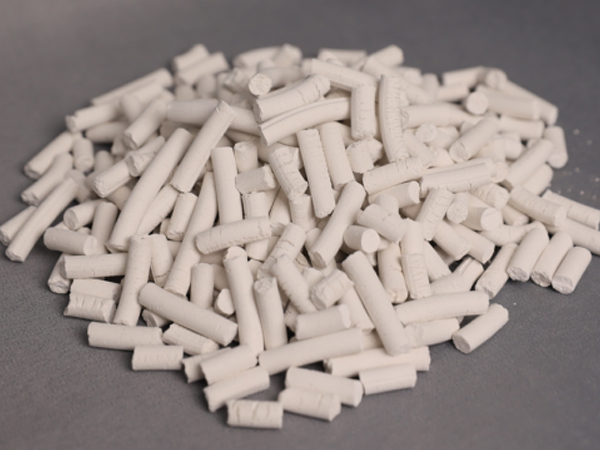A cylindrical calcium-based desulfurizer is a material used in the desulfurization process of industrial gases, such as flue gas from power plants or waste incineration facilities. The desulfurizer is typically made of calcium oxide (CaO) or calcium hydroxide (Ca(OH)2), which react with sulfur compounds in the gas to form calcium sulfite (CaSO3) or calcium sulfate (CaSO4).
The principle of a cylindrical calcium-based desulfurizer is based on a chemical reaction between the desulfurizer material and the sulfur compounds present in the gas stream. The desulfurizer is typically made of calcium oxide (CaO) or calcium hydroxide (Ca(OH)2), which react with the sulfur compounds to form calcium sulfite (CaSO3) or calcium sulfate (CaSO4).

The cylindrical shape of the desulfurizer provides a large surface area for the gas to come into contact with the desulfurizing material, allowing for efficient removal of sulfur compounds from the gas stream. The gas stream is passed through the desulfurizer bed, and as it passes through the cylindrical desulfurizer, the sulfur compounds react with the calcium-based material.
The chemical reaction that occurs in the desulfurizer is typically an acid-base reaction, where the sulfur compounds present in the gas stream act as acids and the calcium-based material acts as a base. The reaction products, calcium sulfite or calcium sulfate, are solid materials that can be easily removed from the gas stream.
…
For more detailed information about the principle of cylindrical calcium-based desulfurizer, please click to visit:https://www.ly-gaifeng.com/blog/principle-of-cylindrical-calcium-based-desulfurizer.html


